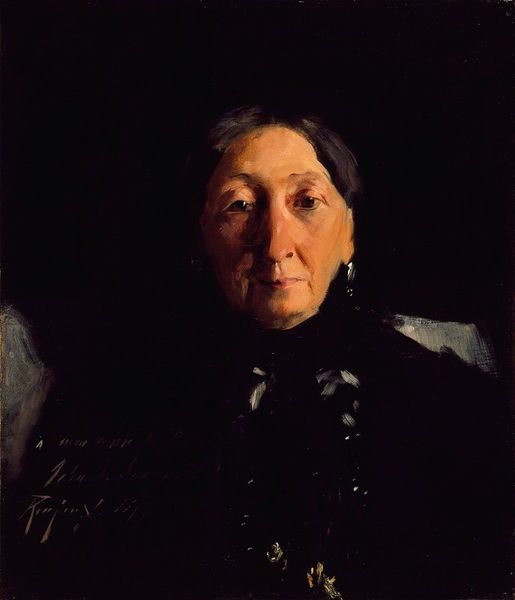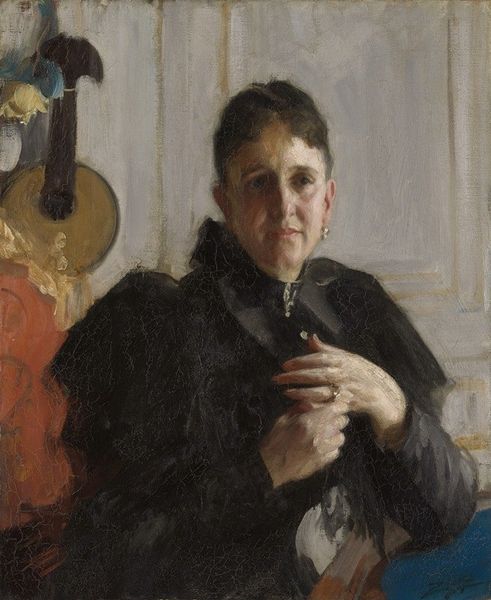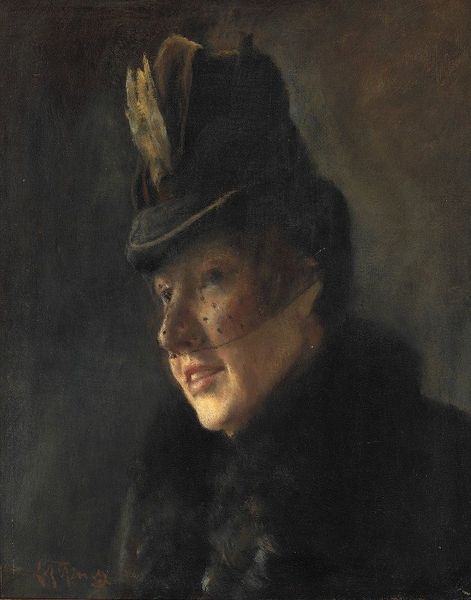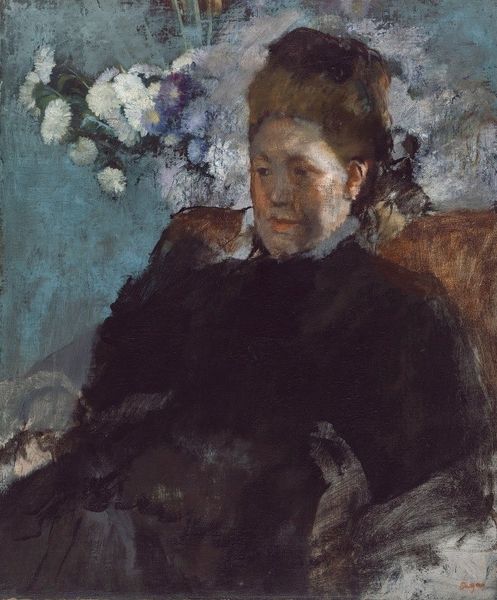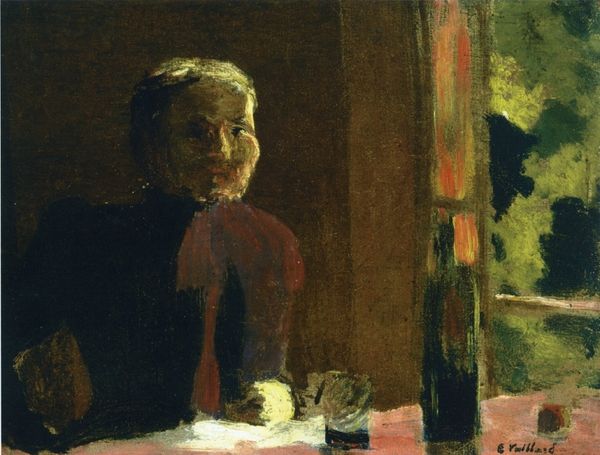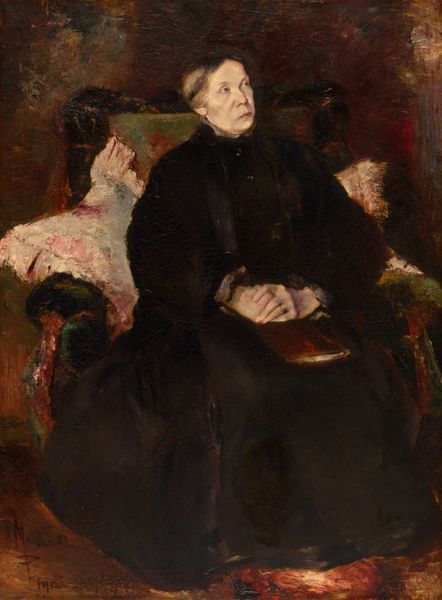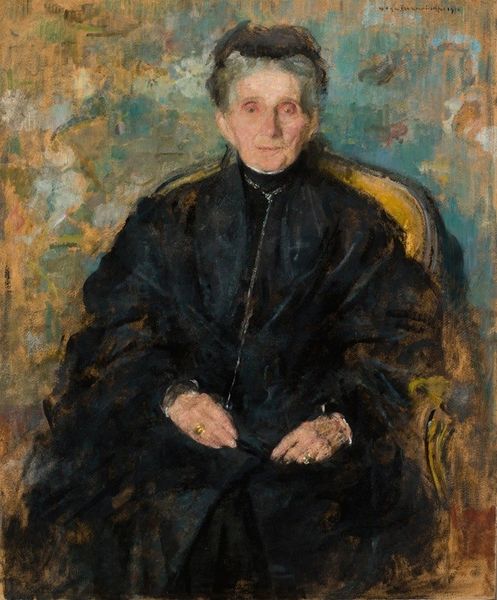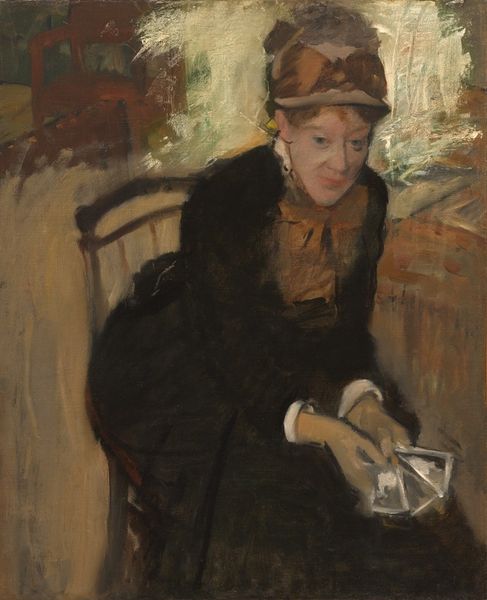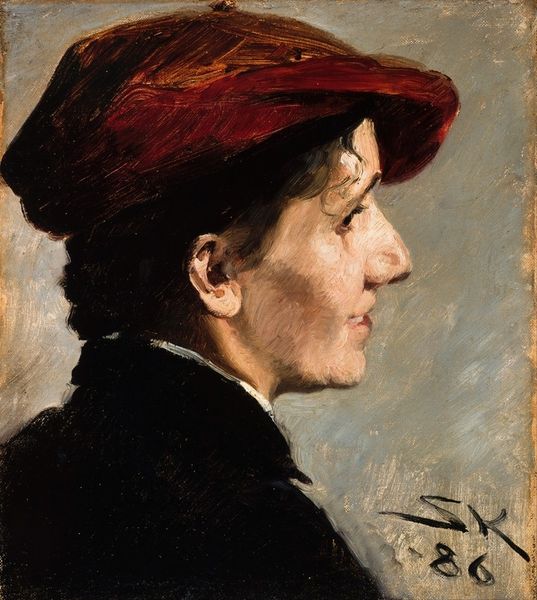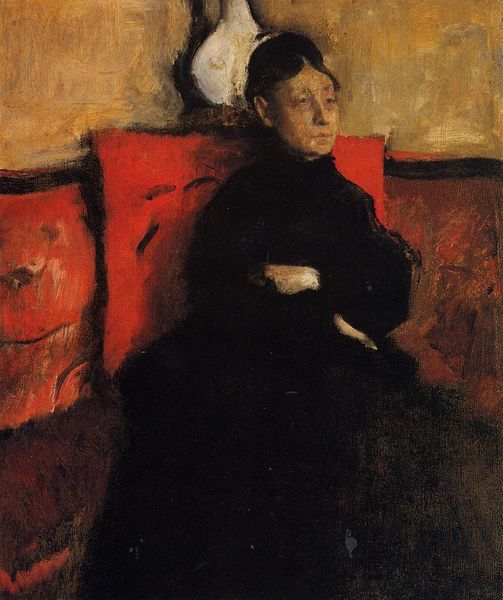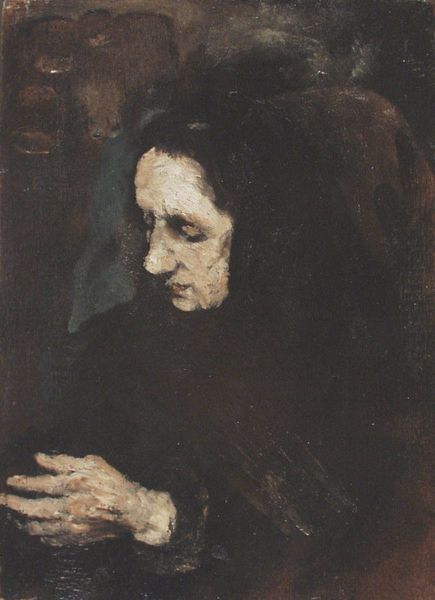
Copyright: Public domain
Editor: This is Ilya Repin's 1899 oil painting, "Portrait of L.I. Shestakova, sister of composer Mikhail Glinka". The painting style seems soft, perhaps Impressionistic, and she appears kind. How do you interpret this work? Curator: Repin’s portraits, particularly of women, can be viewed through the lens of their socio-political context. While seemingly a simple portrait, consider the societal expectations placed upon women in 19th-century Russia. Does Shestakova conform to or subvert those expectations in her visual representation? How does her being the sister of a famous composer affect our reading? Editor: That’s a good point. Her dress and demeanor do seem very proper, maybe suggesting adherence to societal expectations? Curator: Indeed, the dark dress and subdued expression might reinforce those norms. But what about her gaze? Does it strike you as passively demure, or is there something more assertive, challenging even, about how she meets the viewer's eye? This subversion might subtly disrupt the established patriarchal structure. Think about class too – could she be wielding it as a tool? Editor: Now that you mention it, there is a certain strength in her gaze. How does Repin's style itself contribute to our understanding of her? Curator: Repin's realist style invites us to see Shestakova as an individual, but we must be critical and analyze it within the structures of power that defined her world. Where does Shestakova exist within class and gender during this moment? Editor: This has totally changed how I see the portrait! I thought it was just a nice painting of an old lady, but it’s so much more. Curator: Exactly! Art serves as a window into understanding identities and the structures in which identities arise, and invites critical readings.
Comments
No comments
Be the first to comment and join the conversation on the ultimate creative platform.
